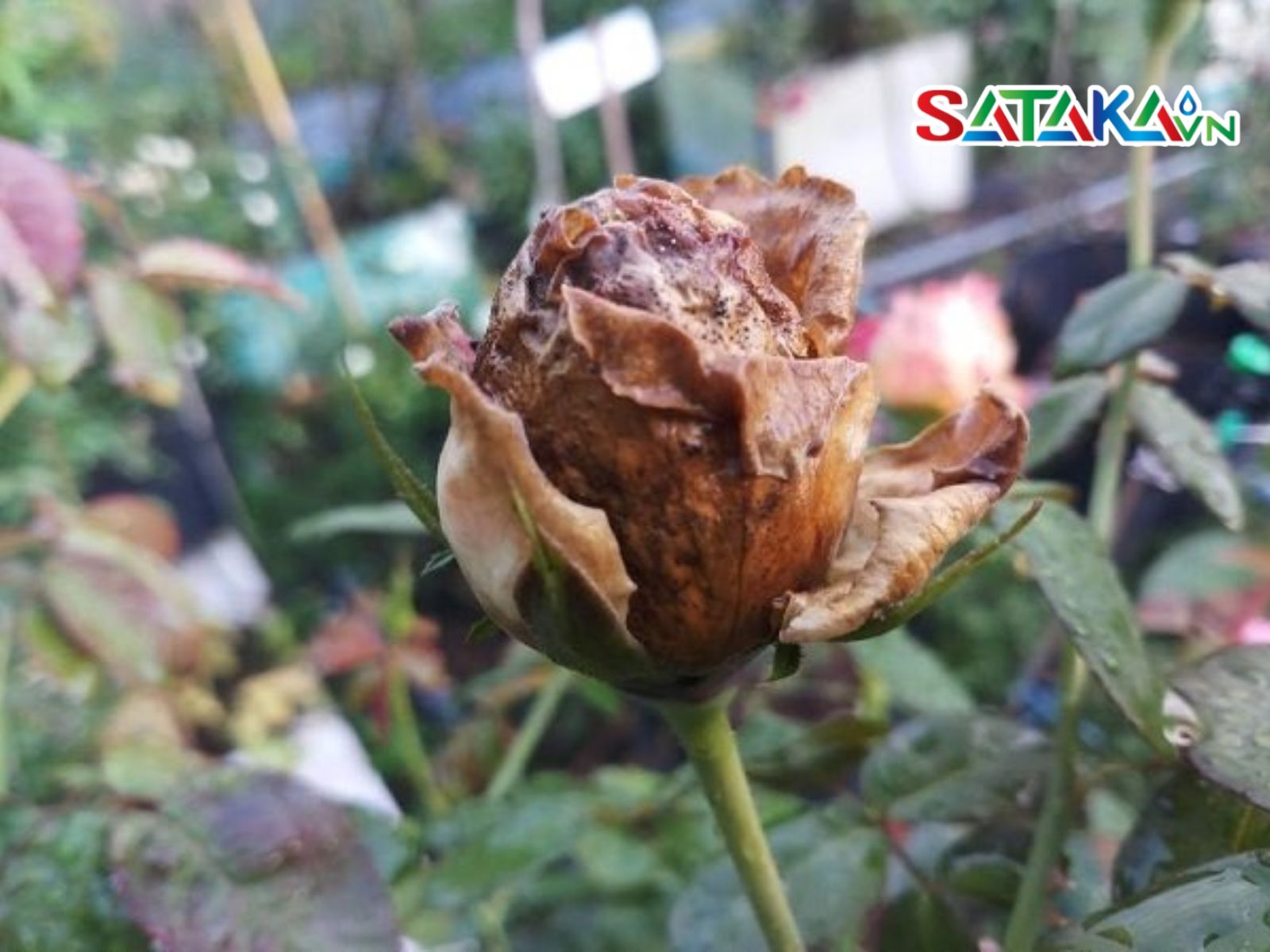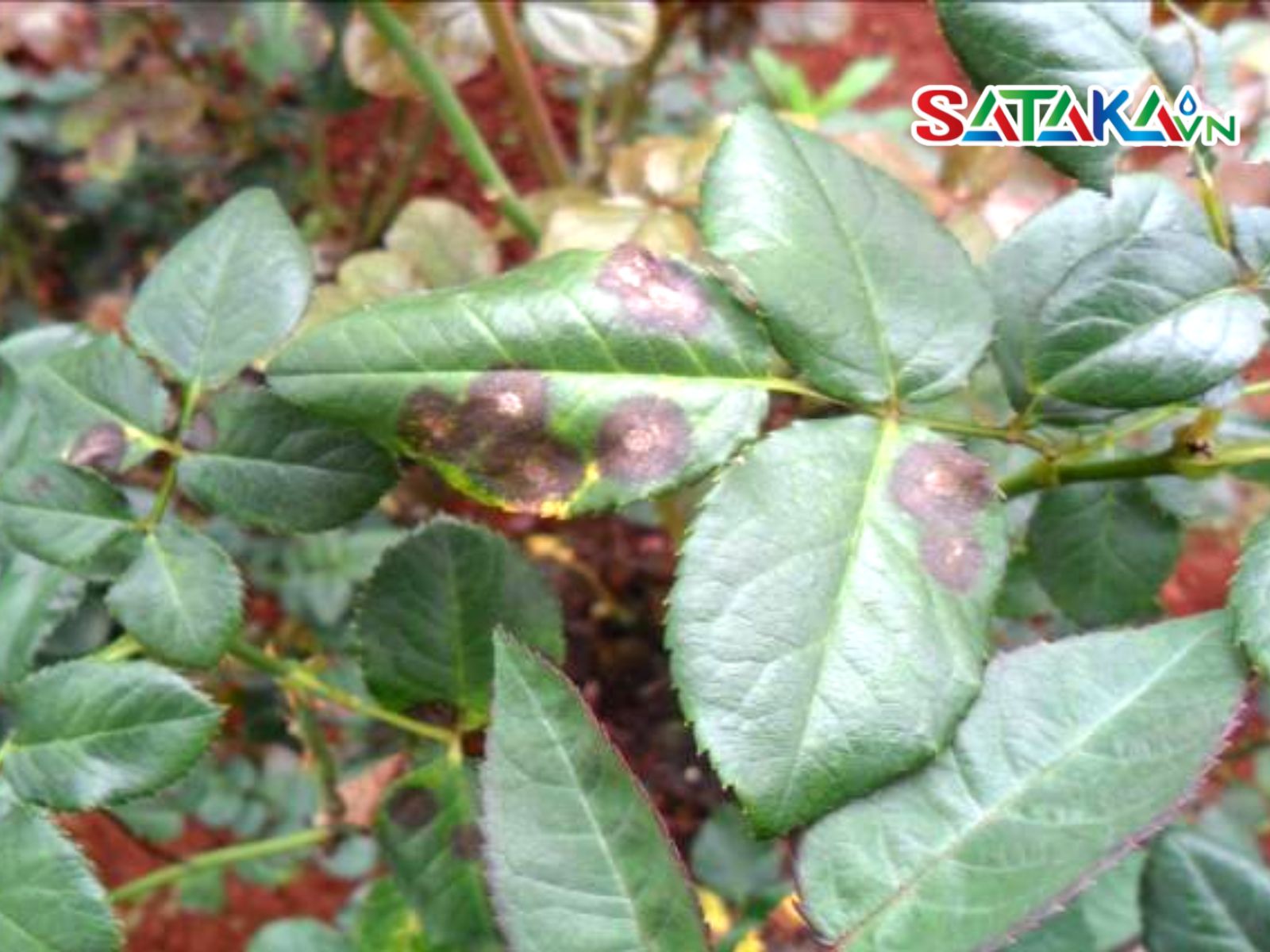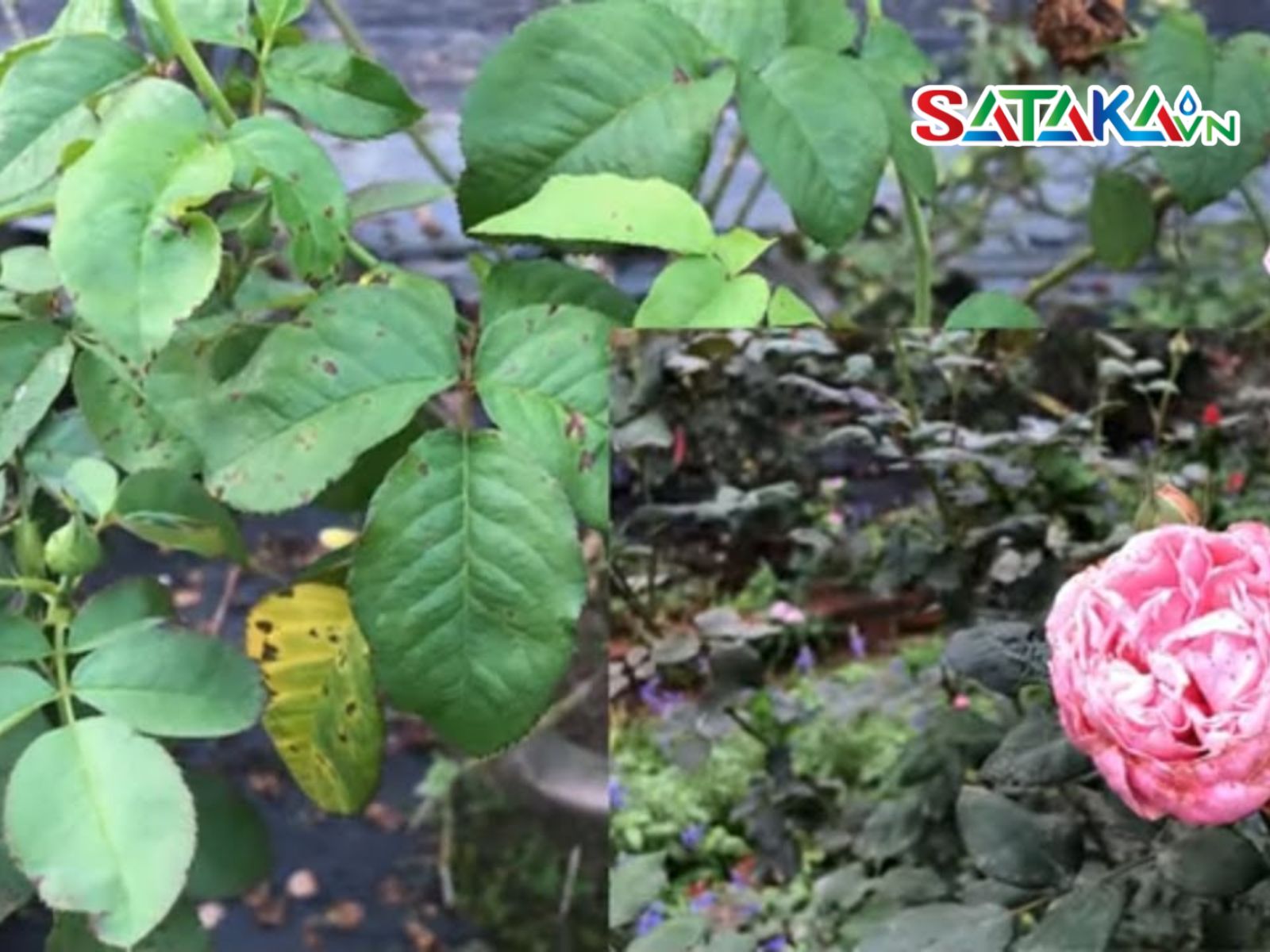Rose anthracnose damages leaves, branches, and flowers, weakening the plant and hindering blooming. Learn how to identify and effectively treat it now!
During the rose care phase, many growers have likely encountered situations where their plants suddenly shed leaves, had scorched edges, failed to bloom, or even became stunted and gradually died. One of the most common causes leading to this condition is rose anthracnose. So, how can you effectively identify, prevent, and treat it? Let's find out with Sataka!
The main cause of this disease is a type of fungus scientifically named Colletotrichum spp, which has the ability to spread rapidly and aggressively in humid environmental conditions.
The pathogenic fungus spreads through wind, rainwater, or direct contact between branches and leaves – especially when roses are planted at high densities, with intertwined canopies, creating favorable conditions for fungal development. Specifically, when the weather is rainy and prolonged, water remaining on the leaf surface doesn't dry quickly enough, allowing fungal spores to easily multiply and penetrate the leaf tissue, stems, and flower buds.
The fungus can spread not only on a single plant but also from one plant to another if care conditions and the environment are not properly maintained.

Causes of Rose Anthracnose
To identify rose anthracnose, growers need to pay attention to the initial signs that primarily appear on the leaves and branches of the plant.
First, when leaves are infected, they will tear, perforate, dry out, and gradually wilt, leading to widespread yellowing and defoliation.
If this condition persists, the rose plant will become stunted, slow-growing, produce few flowers or have unevenly blooming, dull-colored flowers, directly affecting its aesthetic appeal. More severely, if timely intervention measures are not taken, the pathogenic fungus can spread widely, causing massive defoliation, and even leading to plant death.
Explore: Pepper Anthracnose Disease: Causes, Symptoms, and Control Methods
Like many other fungal diseases, anthracnose spreads via spores. These tiny particles can easily disperse with wind, rainwater, or splashing during irrigation. When favorable conditions are met, such as high humidity, low light in the late afternoon, or damp soil environment, the spores will attach to leaves, stems, flowers, and quickly develop into visible lesions.
When the plant is infected, the fungus rapidly produces spores and spreads widely, especially in spring, early summer, or the rainy season – when the weather is humid and cool.
Conversely, when the weather becomes hot and dry, disease symptoms will gradually decrease, and fungal growth will slow down or stop entirely. However, when humidity returns, especially in the late afternoon, the disease can recur at any time if not well-managed.

Life Cycle and Onset Time of Anthracnose
Below are effective prevention and treatment steps that are widely applied and bring positive results to growers.
Handling Upon Early Detection
As soon as you notice brown or yellow spots, or scorched edges appearing on rose leaves, immediately stop watering the leaves, especially in the late afternoon. Then:
Regular Garden Sanitation
One of the important principles for controlling rose anthracnose is maintaining a clean garden:
Proper Watering and Fertilization Regimen
Using Fungicides When Necessary
When the disease develops strongly, apply specific fungicides such as:
Note: Spray fungicides at the correct dosage and time according to instructions; do not overuse them. Do not use foliar fertilizers high in nitrogen when the plant is infected.

Rose Anthracnose Treatment Methods
It's clear that rose anthracnose not only affects aesthetics but also reduces the plant's vitality if not properly treated. However, with careful nurturing, proactive prevention, and timely intervention, you can completely control and repel this harmful fungus. Sataka hopes that the above sharing will be useful to you!
SATAKA VIETNAM JOINT STOCK COMPANY
Address: No. 246 Nguyen Kim Cuong, Tan Thanh Dong Commune, Cu Chi District, Ho Chi Minh City
Hotline: 0856.555.585 or 0789.917.927
Website: https://sataka.com.vn/